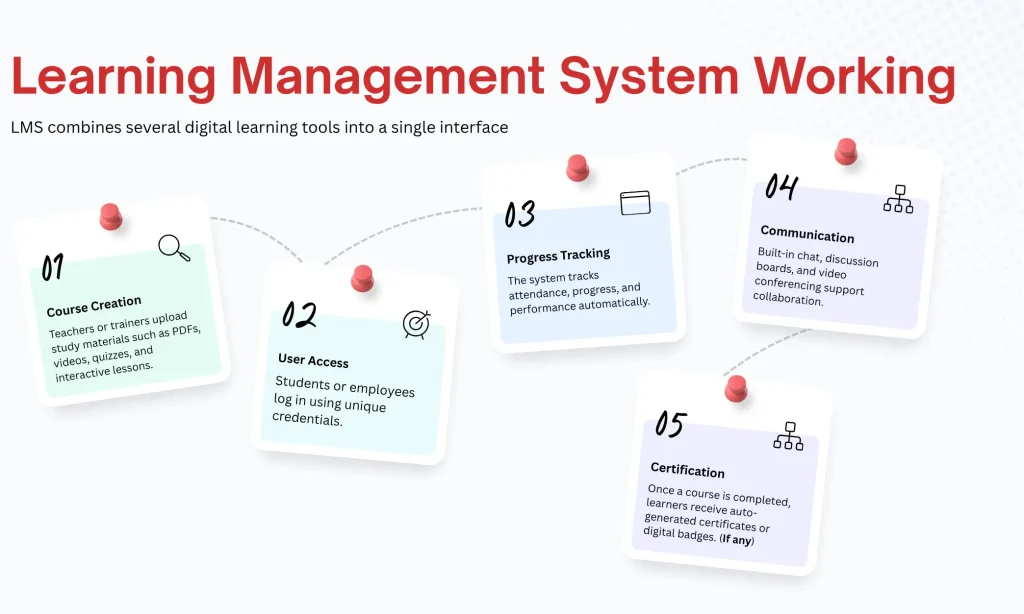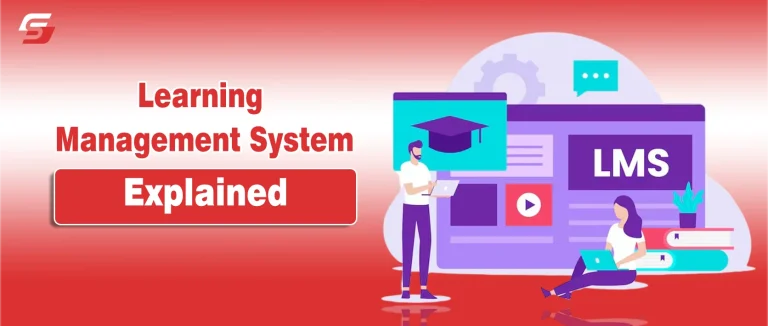As someone who has spent years studying digital learning tools and online education trends, I’ve seen how Learning Management Systems (LMSs) have advanced how we teach, train, and learn. I still remember the first time I used an LMS; it felt like stepping into a classroom without walls.
Everything I needed from lectures and quizzes to assignments and discussions was just a click away. Today, in 2025, LMS platforms are even smarter, more personalized, and central to education and corporate training.
Whether you’re a teacher, student, or business owner, understanding how an LMS works can help you deliver better learning experiences. So, let’s dive deep into what an LMS really is, how it functions, and which platforms are leading the way in 2025.
What is the Learning Management System (LMS)?
A Learning Management System is a software platform designed to create, manage, deliver, and track online training and e-learning programs.
Think of it as your virtual campus or training center, but with automation, data insights, and flexibility that traditional classrooms can’t match. In simpler words, an LMS is the bridge between educators and learners, helping both parties stay organized, engaged, and connected.
What Makes a Good Learning Management System?
A good LMS doesn’t only host online courses, but it’s also about creating a seamless, engaging, and measurable learning experience for users. Whether used in universities or businesses, an LMS should combine usability, flexibility, and powerful features that make digital learning effective.
Here’s what truly makes an LMS good (and future-ready):
- Easy to use for everyone
- Customizable to your brand and needs
- Smart with AI-driven personalization
- Engaging through gamification and interactivity
- Insightful with robust analytics
- Secure, scalable, and accessible anywhere
How Does a Learning Management System Work?
An LMS combines several digital learning tools into a single interface and makes them work together. Here’s how it typically functions:
- Course Creation: Teachers or trainers upload study materials such as PDFs, videos, quizzes, and interactive lessons.
- User Access: Students or employees log in using unique credentials.
- Progress Tracking: The system tracks attendance, progress, and performance automatically.
- Communication: Built-in chat, discussion boards, and video conferencing support collaboration.
- Certification: Once a course is completed, learners receive auto-generated certificates or digital badges. (If any)
Modern LMS platforms are also powered by AI, which offers personalized recommendations, adaptive learning paths, and real-time analytics to enhance learner engagement.

6 Popular Learning Management System Examples in 2025
Here are some of the most reliable and widely used LMS platforms this year:
- Moodle – Open-source, customizable, and perfect for universities and schools.
- Canvas – Known for its modern design, analytics, and mobile-friendly interface.
- Blackboard Learn – A long-time favorite in higher education, now enhanced with AI insights.
- TalentLMS – Ideal for businesses and organizations offering internal training.
- Docebo – Cloud-based and AI-powered, excellent for corporate learning environments.
- Google Classroom – Perfect for schools and educators looking for simplicity and integration.
Each of these platforms supports scalable learning, from small classrooms to global corporations.
Why Does a Learning Management System Matter?
A learning management system matters for educators, students, and enterprises to automate some manual tasks and store essential information under a single roof. Here is the evidence of how:
- For Educators: Simplifies teaching by automating grading, attendance, and course delivery. For example: Google Classroom and Moodle.
- For Students: Offers flexible, self-paced learning anywhere, anytime. For example: TTU Blackboard, PebbleGo, NCEdCloud, and GimKit.
- For Businesses: Streamlines employee onboarding, compliance training, and skill development. For example: Myhtspace, Docebo, and Intuit Workforce.
In essence, an LMS isn’t just a tool, but it’s a learning ecosystem that connects knowledge, technology, and people.
How to Choose the Right Learning Management System?
When selecting a learning management system, consider:
- Your target audience (students, employees, customers).
- The type of content you’ll deliver (videos, live sessions, quizzes).
- Budget and scalability.
- Ease of use for both administrators and learners.
- Integration with your existing tools and systems.
If you’re an educator or HR professional, try free LMS demos before committing to one. The majority of LMS platforms offer trial versions to explore their features firsthand and then pay for a subscription.
Final Thoughts
The Learning Management System is no longer just a “nice-to-have,” but it’s the backbone of modern education and professional training. Having worked closely with these systems, I’ve seen firsthand how they make learning more organized, measurable, and engaging.
In 2025, LMS technology continues to redefine what’s possible in online education, which empowers learners and educators alike to connect, create, and grow beyond physical boundaries.
People Also Ask About LMS
To simplify and centralize the process of delivering, tracking, and managing online learning programs.
No, businesses, government institutions, and non-profits use LMS platforms for employee and customer training as well.
Many LMS options, like Moodle or Google Classroom, are free or offer affordable subscription models depending on usage scale.
eLearning refers to the method of learning online, while LMS is the platform that delivers and manages that learning.
TalentLMS, LearnDash, or Moodle Cloud are cost-effective and easy to set up.











